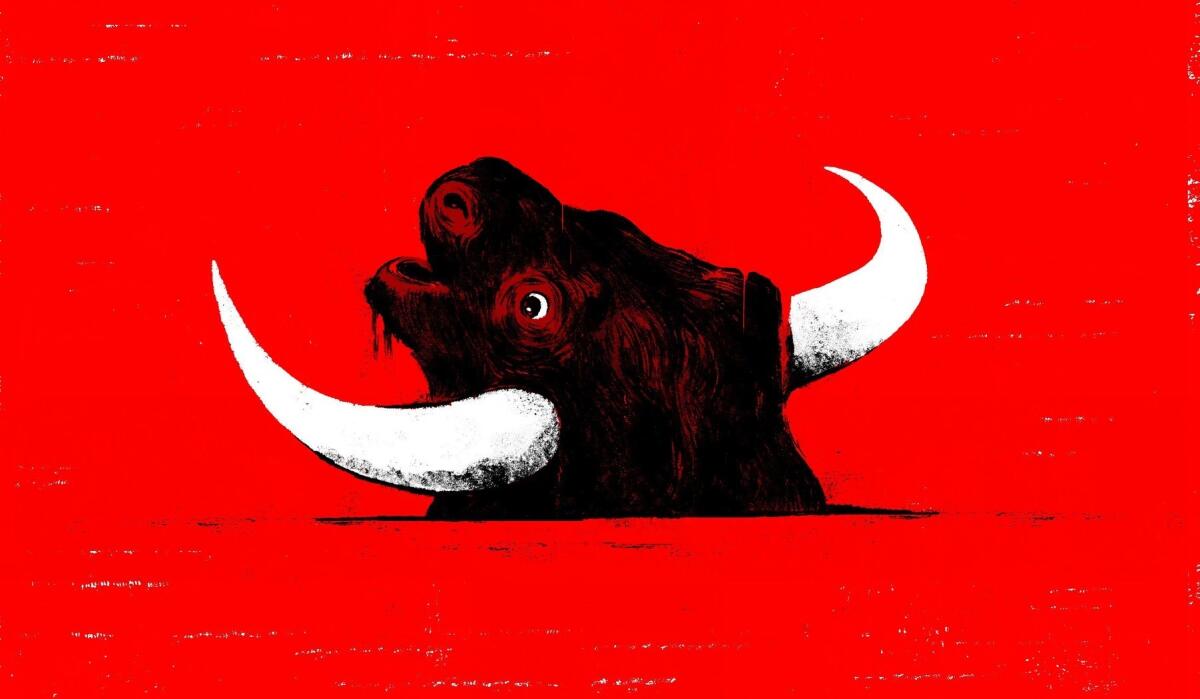Op-Ed: The cruelty behind your ballpark hot dog

- Share via
Late last year, a government inspector paid a visit to Clougherty Packing, the Vernon slaughterhouse responsible for killing the animals that, in the afterlife, become Dodger Dogs and Farmer John-brand meats. With the inspector watching, an employee tried to render a lame pig unconscious, a procedure that should require one shot to the head with a stun gun. Because the pig was not properly restrained, however, the employee had to shoot her multiple times.
Later, the inspector witnessed another botched stunning: the employee had to “pull out the stuck rod from the skull and reload the captive bolt” before he finally succeeded. In both cases, there was no backup stunning device available.
Such sloppy work amounts to “egregious” illegal activity under the Humane Slaughter Act, which declares that livestock must be slaughtered “only by humane methods.” The U.S. Department of Agriculture — according to its own policy directives — is supposed to suspend plant operations in response to such infractions. It can also refer abuse for criminal prosecution or, in extreme cases, effectively shut down a poorly run plant by withdrawing its grant of federal inspection.
Yet official records that I received through the Freedom of Information Act show that after the Clougherty Packing debacle, as well as similar incidents across the country over the last two years, the USDA declined to punish the perpetrators, issuing administrative warnings instead.
USDA inspection records chronicle workers running over crippled animals with construction equipment, animals regaining consciousness after having been shot through the head with a captive bolt, and workers intentionally abusing injured animals. Dozens of slaughterhouses either can’t or won’t follow the law. But the USDA allows them to continue operating.
At a Minnesota slaughterhouse, a plant manager repeatedly electrocuted a cow that was trapped in the stunning box with a hole in her head. For more than 15 minutes, the worker tormented this cow with electric prods, trying to force her from the pen “despite this being physically impossible.” When she was finally killed and extracted from the box, this poor animal had four freshly broken ribs and multiple deep wounds where her “hide had been forcefully ripped off, varying in depth but in some regions down to the [muscle] beneath.”
Over less than eight months, this plant was cited 14 times for humane slaughter violations and its operations were suspended on multiple occasions, but it was not shut down and no one was criminally prosecuted.
At a plant near Fresno, a worker unloading animals from a truck dropped a crippled calf from a height of about three feet onto the concrete floor of the slaughter pen. “This calf landed on its body and remained recumbent on the concrete.” The worker continued, pushing four more calves “off the trailer, chin first onto the concrete.” Although plant operations were briefly suspended, the worker was not charged for this intentional and criminal cruelty.
As if such documented brutality weren’t bad enough, undercover investigations consistently find that abuse is even worse than is indicated in the USDA’s official records.
At a slaughter plant in Chino that processes large numbers of crippled dairy cows, the Humane Society of the United States secretly documented workers beating animals, shocking them, ramming them with forklifts and using high-power hoses to shoot water into their nostrils — all in an attempt to force them to stand. USDA inspectors were in the plant during each incident, but they never cited the plant for abuse.
The USDA’s own inspector general warned in 2013 that Humane Slaughter Act enforcement was both “inconsistent” and “lenient.” In a random sampling of inspection reports, the inspector general found 10 egregious violations of the law that did not result in plant suspension, including a captive bolt lodging in a conscious pig’s skull for at least four minutes before the animal was killed, a pig being boiled alive and a forklift operator driving repeatedly into a crippled pig.
If the USDA is going to follow its own policy directives and enforce the Humane Slaughter Act, it should consider two crucial reforms.
First, all egregious violations of the law should automatically result in at least plant suspension. Over the years 2013 and 2014, I documented dozens of examples of such violations that resulted in mere warnings. That simply makes no sense; an egregious infraction deserves a stern response.
Second, the USDA should refer intentional abuse for criminal prosecution. The Humane Slaughter Act is a criminal statute and violations can — theoretically — result in fines and jail time. Not only is criminal prosecution a suitable punishment for animal abuse, but the predictable threat of prosecution would act as a deterrent, discouraging mistreatment in the first place.
Personally, I see no ethical difference between eating a chicken or a cat, a pig or a puppy; I don’t think slaughtering animals for one’s dinner can ever be humane. But, for now, the Humane Slaughter Act is all we have; the least the USDA could do is enforce it.
Bruce Friedrich is director of policy for Farm Sanctuary, a national farm animal protection organization.
Follow the Opinion section on Twitter @latimesopinion and Facebook
More to Read
A cure for the common opinion
Get thought-provoking perspectives with our weekly newsletter.
You may occasionally receive promotional content from the Los Angeles Times.









